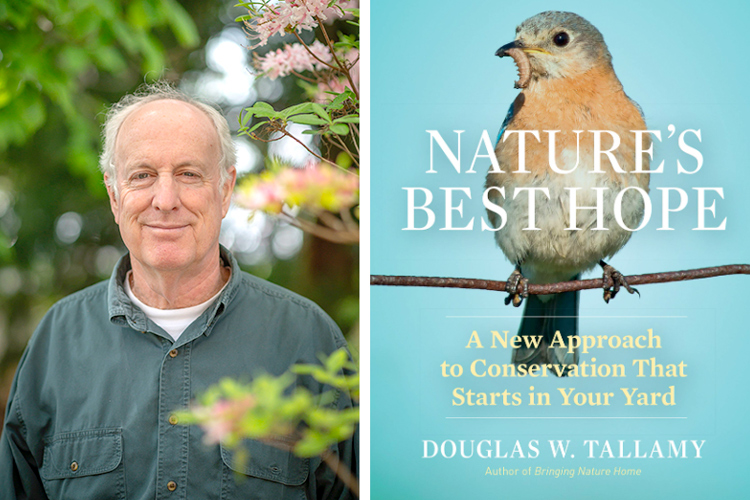
Worried about the planet? Change starts in your backyard. Learn how we can take simple steps that help reverse declining biodiversity and be nature’s best hope.
January 6, 2023
Doors open at 6:00PM | Lecture starts at 7:00PM
Crawford Theater
FREE
Register for online streaming here.
“We are at a critical point of losing so many species from local ecosystems that their ability to produce the oxygen, clean water, flood control, pollination, pest control, carbon storage, etc, that is, the ecosystem services that sustain us, will become seriously compromised.” – Doug Tallamy
Mr. Tallamy brings a new approach to conservation that starts in our own yards. By landscaping with native plant communities that sustain food webs and biodiversity, we can enhance local ecosystems rather than degrade them. If we do this in half of the area in America we now have in mowed lawns, we can create a new “Homegrown National Park”—a 20 million acre network of viable habitats that will provide vital corridors connecting the few natural areas that remain. This approach to conservation empowers each of us to play a significant role in the future of the natural world.
Doug is a professor in the Department of Entomology and Wildlife Ecology at the University of Delaware, where he has authored 104 research articles and publications and has taught insect related courses for 40 years. His latest books are the New York Times bestseller Nature’s Best Hope: A New Approach to Conservation that Starts in Your Yard and The Nature of Oaks: The Rich Ecology of Our Most Essential Native Tree. His book Bringing Nature Home: How Native Plants Sustain Wildlife in Our Gardens (2007) was awarded the 2008 silver medal by the Garden Writers’ Association. Tallamy was awarded the Garden Club of America Margaret Douglas Medal for Conservation and the Tom Dodd Jr. Award of Excellence in 2013.
Event Sponsored By:
Sacajawea Audubon Society
Montana Native Plant Society
Wild Birds Unlimited
Kenyon Noble
Gallatin Invasive Species Alliance
Great Bear Native Plants

